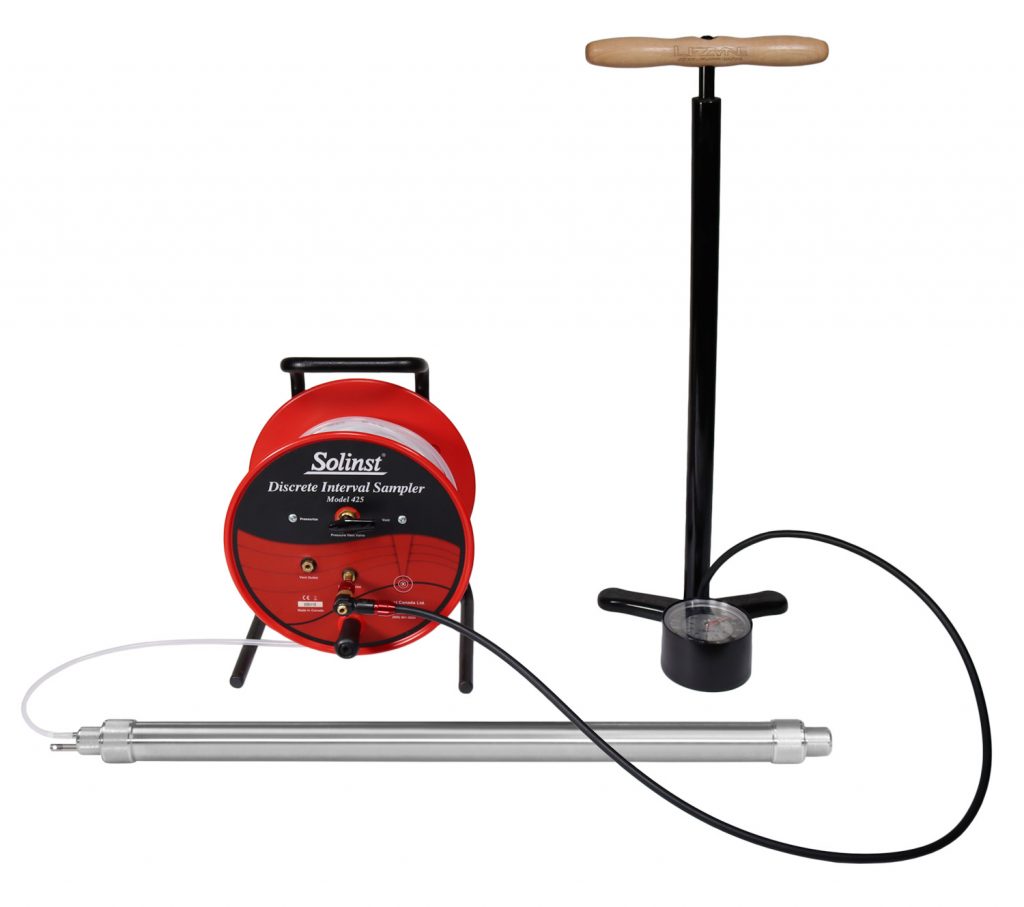Changes in legislation, combined with improved and lower cost sampling instrumentation, have encouraged consultants, researchers, and government agencies to obtain higher quality groundwater samples. No-purge, also known as passive or grab sampling, is one method that is gaining acceptance by many regulatory agencies for obtaining representative groundwater samples.
The ITRC (Interstate Technology & Regulatory Council) define a “passive” sampler as one that is able to acquire a sample from a discrete location without the active media transport induced by pumping or purge technologies.
Methodology
Sampling methods are based on the principle that groundwater, which flows through a screen and into a well, is characteristic of the water outside the well at that depth. Studies have shown that sampling at the screened interval should result in a representative sample, without the need for purging. In order to get a sample representative of aquifer conditions, passive samplers must be submerged within the screened interval and remain in the well until groundwater conditions have re-equilibrated. Once equilibrium is reached, a sample can be taken. Samples can also be taken as soon as the target depth is reached to obtain a sample of current conditions in the well.
When compared to conventional sampling methods, no-purge samplers typically require less costs and time to retrieve a sample. Minimal labour is required as there is no purge water to manage, or dispose. Normally, no-purge samplers do not require power, a compressor or control unit, and there is little or no well water agitation when the samplers are deployed and operated.
Sampler Options

There are a variety of passive sampler types available, they include pressure sealed canisters, trigger released samplers and passive diffusion bag samplers. Many passive samplers can also be categorized as “grab” samplers. These devices retrieve a well water sample that is an instantaneous “snap shot” of that sampling point at the moment the sample was taken.
Traditionally bailers were used to obtain grab samples, now discrete interval samplers are another option. Discrete interval samplers differ from bailers in that water only passes over the body of the device and not through it as it is lowered through the water column. At depth and after re-equilibration has occurred, the device is “opened” allowing water to enter. Once filled, the device is resealed and retrieved to surface.
Solinst Canada Ltd. produces the Model 425 Discrete Interval Sampler (DIS), which is a pressure sealed stainless steel sampler activated by a high pressure hand pump. The sampler is pressurized before being lowered into the well. Once the desired depth is reached, the pressure is vented and hydrostatic pressure fills the sampler with water directly from the sampling zone.
When the sampler is filled, it is repressurized and raised to surface. Check balls prevent water from entering the tubing. The sample is decanted using the sample release device, which regulates flow and minimizes degassing of the sample.
Solinst also offers the Model 425-D Deep Sampling Discrete Interval Sampler, which operates using the basic principles of hydraulics to sample from submerged depths as much as 1200 m (4000 ft.).
Note: A Solinst Tag Line with a Power Winder is a great option for lowering DIS samplers to these depths.
Issues and Considerations
Passive sampling relies on the natural horizontal flow of groundwater through a screened interval in a well. Other factors should also be considered when using passive samplers, including vertical flow in the well, contaminant stratification, hydraulic conductivity of the aquifer, mixing, etc. Other sampling options, such as low flow pumping, should also be compared and considered to determine the most appropriate sampling method for a site’s conditions.
References
ITRC (Interstate Technology & Regulatory Council). 2007. Protocol for Use of Five Passive Samplers to Sample for a Variety of Contaminants in Groundwater. DSP-5. Washington, D.C.: Interstate Technology & Regulatory Council, Diffusion/Passive Sampler Team. www.itrcweb.org.
Parker, Louise V., Charles H. Clark. 2002. Study of Five Discrete Interval-Type Groundwater Sampling Devices. US Army Corps of Engineers® Engineer Research and Development Center, Technical Report: ERDC/CRREL TR-02-12.
Does the Model 425 or 425-D Discrete Interval Sampler sound like the right sampler for your project? Get a Quote Now!
